Recent Water Damage Posts
Attic Water Damage: Your #1 Guide to Effective Restoration
2/24/2025 (Permalink)
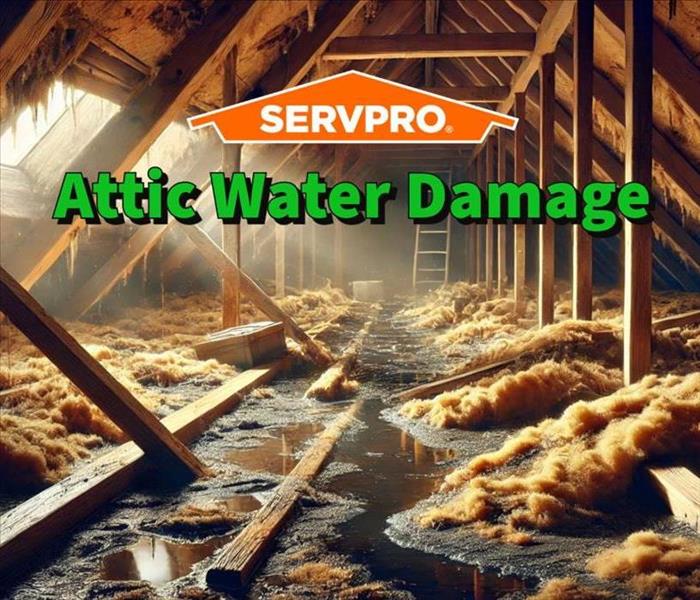 The professionals at SERVPRO are available 24/7 to help combat attic water damage!
The professionals at SERVPRO are available 24/7 to help combat attic water damage!
This comprehensive attic water damage resource provides expert insights and practical steps to safeguard your property from costly water-related issues.
Attics are often overlooked spaces but are particularly vulnerable to water damage. Whether caused by roof leaks, poor ventilation, or condensation buildup, attic water damage can lead to structural issues, compromised insulation, and costly repairs. Left untreated, it can impact your home's overall safety and efficiency.
This blog post will explore the common causes of attic water damage, offer practical prevention tips, and showcase how SERVPRO® expertise can help restore your property after water intrusion.
What are the common causes of attic water damage?
Attic water damage can stem from several sources, many of which go unnoticed until the damage becomes severe. The most common culprits include:
- Roof leaks: Missing shingles, damaged flashing, or worn-out roofing materials can allow water to seep into your attic.
- Poor ventilation: Excess moisture from indoor activities can rise to the attic, leading to condensation and moisture buildup.
- Ice dams: In colder climates, ice dams can form on the roof, blocking proper drainage and forcing water into the attic.
- Clogged gutters: Blocked gutters can overflow, allowing water to back up under roofing materials and enter the attic.
- HVAC system issues: Improperly installed or leaking HVAC ducts can introduce moisture into the attic space.
- Plumbing leaks: If pipes run through the attic, a small leak can cause significant water damage over time.
How can roof leaks lead to extensive property damage?
A leaking roof can allow water to seep into the attic, soaking insulation, wooden beams, and ceiling materials. This can result in:
- Structural deterioration: Prolonged moisture exposure weakens wood framing, leading to potential structural instability.
- Ruined insulation: Wet insulation loses its effectiveness, making your home less energy-efficient and driving up utility costs.
- Stains and ceiling damage: Water can eventually penetrate the ceiling, causing unsightly stains and drywall deterioration.
- Electrical hazards: Moisture exposure near wiring can increase the risk of short circuits and electrical malfunctions.
Tips to prevent attic water damage
Preventing attic water damage requires proactive maintenance and regular inspections. Follow these steps to safeguard your home:
- Inspect your roof regularly: Check for missing or damaged shingles, cracked flashing, and signs of wear and tear.
- Keep gutters and downspouts clear: Ensure proper water drainage by removing debris from gutters and directing downspouts away from the foundation.
- Check attic insulation and ventilation: Proper airflow reduces moisture buildup and prevents condensation issues.
- Seal gaps and openings: Use weather stripping and caulk to seal any gaps allowing water intrusion.
- Monitor for signs of leaks: Look for dark stains, damp insulation, or musty odors in the attic.
- Install a leak detection system: Smart leak detectors can alert you to water intrusion before damage becomes extensive.
- Schedule a professional roof inspection: A yearly inspection by roofing experts can identify and fix minor problems before they escalate.
A recent attic water damage restoration in Jefferson, Georgia
Recently, a homeowner in Jefferson, Georgia, contacted SERVPRO after discovering significant attic water damage following a heavy storm. The culprit? A small but persistent roof leak that had gone unnoticed for months. Water had saturated the attic insulation, leaving sections of the wooden beams compromised.
Upon receiving the call, our SERVPRO team responded swiftly. Our restoration process included:
Immediate water extraction
We removed all standing water and damp insulation using specialized equipment, preventing further damage to the structure.
Drying and dehumidification
High-powered air movers and industrial dehumidifiers were deployed to dry the attic completely, ensuring no lingering moisture remained.
Structural repairs and reinforcement
Our experts replaced compromised wooden supports, reinforcing the attic structure to restore its integrity.
Preventative measures
We installed high-quality attic ventilation to prevent future occurrences and provided the homeowner with roof maintenance recommendations.
This Jefferson, Georgia case highlights the importance of routine inspections and swift action when water damage is detected. Thanks to SERVPRO®'s expertise, the homeowner's attic was fully restored, preventing more costly structural issues in the future.
What should you do when you experience attic water damage?
If you suspect attic water damage, quick action is key. Follow these steps to minimize damage:
- Stop the source of water: If possible, address the leak immediately to prevent further intrusion.
- Document the damage: Take photos for insurance purposes before attempting cleanup.
- Remove wet materials: Wet insulation and damaged items should be removed to prevent further saturation.
- Ventilate the space: Increase airflow using fans to aid in drying.
- Contact SERVPRO: Professional restoration ensures thorough water extraction, drying, and repairs.
Wrapping up
SERVPRO specializes in water damage restoration, offering fast, efficient, and reliable services to homeowners facing attic water damage. Our advanced drying techniques, expert knowledge, and dedication to customer satisfaction make us a trusted name in property restoration.
If you suspect attic water damage in your home, don't wait until it worsens. Contact SERVPRO today for a comprehensive inspection and expert restoration services. With our rapid response and cutting-edge technology, we'll help protect your property from costly water damage and restore it to preloss condition.
Appliance Leaks: 7 Proven Ways to Prevent Water Damage
9/30/2024 (Permalink)
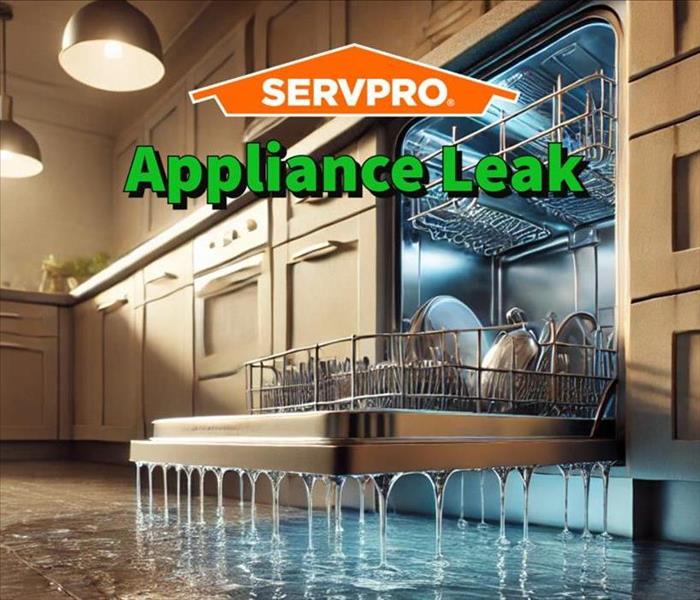 SERVPRO offers reliable appliance leak mitigation services!
SERVPRO offers reliable appliance leak mitigation services!
Appliance leaks can cause significant damage to your property, but with the proper knowledge and steps, you can prevent significant issues.
In this comprehensive guide, we explore the causes of appliance leaks, provide practical prevention tips, and explain how SERVPRO® can assist in restoring properties affected by these damaging events. Whether it's your washing machine, dishwasher, or water heater, understanding the risks and how to manage them is critical to protecting your home or business.
Why Do Appliance Leaks Happen?
Appliance leaks can stem from various sources, from old or faulty equipment to improper installation. The most common culprits include washing machines, dishwashers, refrigerators, and water heaters. Over time, hoses, seals, and internal components can wear down, leading to leaks that, if unnoticed, can cause extensive water damage.
Washing machines, for example, may develop leaks due to worn-out hoses or connections. Dishwashers might fail to drain properly, leading to overflow. Refrigerators, particularly those with ice makers, can experience leaks if water lines are compromised. Meanwhile, water heaters can develop rust or cracks, leading to slow but steady water accumulation.
When left untreated, these leaks can lead to structural damage, increased moisture levels, and even mold growth. That's why it's critical to address them as soon as they are discovered.
How Can Appliance Leaks Damage Your Property?
Even a small, steady leak from an appliance can wreak havoc on your property over time. Water can seep into floors, walls, and cabinets, weakening the structure and creating an environment ripe for mold growth. Carpets and wood flooring are particularly susceptible, as water can be absorbed deeply into these materials, making them difficult to remove without professional help.
Take Jefferson, Georgia, where a homeowner recently experienced a dishwasher leak. What began as a minor issue with a small puddle quickly escalated. Over a few days, water spread beneath the kitchen cabinets and into the adjacent living room, warping the wood floors and damaging the drywall. By the time the homeowners noticed, extensive repairs were necessary.
Tips to Prevent Appliance Leaks
Preventing appliance leaks requires regular maintenance and proactive care. Here are some tips to help safeguard your property from potential water damage:
- Inspect hoses regularly: For appliances like washing machines, dishwashers, and refrigerators, check the water hoses at least once a year for signs of wear, cracks, or bulging. Replace them immediately if any damage is found.
- Use high-quality hoses: Invest in braided stainless steel hoses, which are more durable and less prone to leaks than traditional rubber hoses.
- Check connections: Ensure connections between the water supply and your appliances are secure and not leaking. Tighten any loose fittings and replace faulty ones.
- Install a water leak detector: Smart water leak detectors can be placed near appliances, alerting you to any leaks before they cause significant damage.
- Turn off the water supply when not in use: If you are going on vacation or leaving the house for an extended period, shut off the water supply to appliances to prevent potential leaks.
- Schedule regular maintenance: Have a professional inspect your water heater, dishwasher, and washing machine periodically to ensure all components function correctly.
- Replace old appliances: Older appliances are more prone to leaks, significantly if they surpass their recommended lifespan. Consider replacing outdated appliances with newer, more efficient models.
What to Do If You Experience an Appliance Leak
When you notice an appliance leak, the first step is to stop the water flow. This could mean shutting off the appliance or turning off the water supply entirely. Once the immediate water source is contained, it's important to begin cleaning up the affected area. Remove any standing water and dry the space as thoroughly as possible.
However, it's best to call professionals for more significant leaks or damage. SERVPRO specializes in water damage restoration and can assist with:
- Water extraction: Using advanced equipment, SERVPRO teams can quickly remove standing water from your property, preventing further damage.
- Drying and dehumidification: SERVPRO uses state-of-the-art drying technology to ensure no moisture is left behind after the water is removed. This step is essential to prevent mold growth and protect the structural integrity of your property.
- Repairing damaged areas: SERVPRO professionals can repair any areas damaged by the water, including flooring, walls, and cabinetry. Their comprehensive restoration services ensure your home or business is restored to its pre-damage condition.
- Monitoring for long-term damage: SERVPRO teams don't just stop at immediate restoration. They carefully monitor moisture levels to minimize the risk of future damage, such as mold growth.
A Real-Life Scenario in Jefferson, Georgia
A family in Jefferson, Georgia, recently faced a devastating appliance leak. Their water heater, which had been in service for over ten years, began to rust internally, causing a slow leak. Unfortunately, the leak went unnoticed for several days, during which water seeped into the adjacent rooms, damaging the hardwood floors and baseboards.
When the homeowners discovered the issue, they called SERVPRO immediately. The SERVPRO team arrived promptly, assessed the situation, and extracted the water. They used professional drying equipment to eliminate any remaining moisture and prevent mold growth. Afterward, the team repaired the damaged flooring and baseboards, restoring the home to its original condition.
This family was thankful for the swift action and expertise of the SERVPRO team, which prevented even more extensive damage and costly repairs.
Why Choose SERVPRO for Appliance Leak Restoration?
When faced with an appliance leak, acting quickly can make all the difference in preventing long-term damage to your property. SERVPRO has the expertise, tools, and experience to handle water damage restoration efficiently and effectively. Here's why you should choose SERVPRO:
- Rapid response: Time is of the essence when dealing with water damage. SERVPRO understands this and prioritizes quick action to prevent further damage.
- Advanced technology: SERVPRO uses the latest water extraction, drying, and dehumidification technology to ensure thorough restoration.
- Comprehensive services: From initial water removal to final repairs, SERVPRO offers a full suite of restoration services, ensuring your property is completely restored.
- Expert team: SERVPRO professionals are highly trained in water damage restoration and have the experience to handle even the most complex cases.
Conclusion
Appliance leaks are a common but often overlooked source of water damage. By taking preventative measures and acting quickly when a leak occurs, you can minimize the damage to your property. Should the worst happen, know that SERVPRO is ready to help with comprehensive water damage restoration services.
SERVPRO has built a reputation for excellence in water damage restoration from Jefferson, Georgia, to communities across the county. Don't let an appliance leak compromise your home or business—contact SERVPRO for fast, reliable service today.
Prevent Dishwasher Water Damage With 7 Practical Tips
4/29/2024 (Permalink)
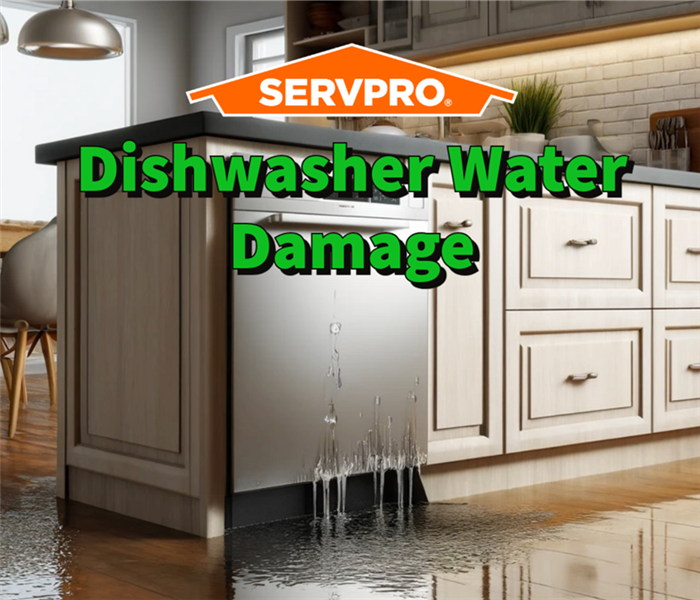 The professionals at SERVPRO are on-call and ready to help you combat water damage.
The professionals at SERVPRO are on-call and ready to help you combat water damage.
Your ultimate guide to preventing and managing dishwasher water damage in Georgia.
Dishwashers, an everyday convenience in homes across the country, can unexpectedly become a disaster source when malfunctions lead to water damage. This blog post delves into the typical causes of dishwasher water damage, provides detailed prevention tips, and highlights how SERVPRO® can effectively help residents recover from such mishaps.
Understanding Dishwasher Water Damage
Water damage from dishwashers can occur suddenly and significantly affect your home’s structure and safety. Common issues include leaking seals, broken hoses, and clogs that can cause water to spill onto kitchen floors and seep into subfloors and walls.
Common Causes of Dishwasher Water Damage
- Faulty Water Supply Lines: The line that supplies water to your dishwasher can leak if it becomes loose or degraded.
- Improper Sealing: Leaks can occur if the door seal is worn out or the dishwasher needs to be correctly aligned.
- Clogged Drain Lines: Food particles and debris can clog the drain, leading to backups and overflow.
- Overloading the Dishwasher: Excess dishes can cause water to splash out, mainly if the spray arm is obstructed.
7 Steps to Prevent Dishwasher Water Damage
- Regular Maintenance: Inspect and replace brittle water hoses and worn-out seals annually.
- Correct Installation: Ensure your dishwasher is level and securely fastened to prevent water from escaping.
- Run Regular Cleaning Cycles: Use vinegar to run an empty cycle monthly to clear out clogs and keep the drain line clear.
- Check for Leaks Periodically: Look under and around your dishwasher for signs of water leaks and address repairs immediately.
- Avoid Overloading: Load your dishwasher according to the manufacturer’s guidelines to avoid misdirecting spray and causing leaks.
- Use High-Quality Detergent: Low-quality or too much detergent can create excessive suds, which might lead to overflow.
- Professional Water Damage Inspections: Have professionals like SERVPRO inspect your dishwasher and connections if you suspect any issues.
A Recent Incident in Danielsville, Georgia
A Danielsville family recently experienced a significant home emergency when their dishwasher hose burst while running a cycle late at night. The family awoke to find their kitchen and adjacent living area flooded, causing extensive water damage to their flooring and cabinetry.
Immediate Response:
Upon discovering the flood, the homeowners quickly contacted SERVPRO. Our emergency response team arrived promptly to assess the damage and begin the water extraction.
Restoration Process:
Our restoration process began with using advanced extraction equipment to remove the standing water. We then installed air movers and dehumidifiers to dry the affected areas thoroughly. The damaged kitchen units were replaced, and all affected surfaces were sanitized and deodorized to prevent mold growth. This comprehensive approach ensured the homeowner’s kitchen was restored to its pre-damage condition.
Long-Term Solutions Provided:
After addressing the immediate water damage, SERVPRO assisted the homeowners in installing a new, high-quality water supply hose and provided guidelines on regular maintenance checks to prevent future incidents.
This case highlights the rapid response of SERVPRO and underscores the power of proactive measures in preventing dishwasher water damage. By taking the initiative to maintain your dishwasher, you can significantly reduce the risk of such incidents, empowering you to protect your home.
What to Do if You Experience Dishwasher Water Damage
- Stop the Water Source: Turn off the water supply to the dishwasher immediately to prevent further damage.
- Remove Standing Water: Mop up or use a wet vacuum to remove as much water as possible.
- Contact Professionals: Call SERVPRO for a comprehensive damage assessment and tailored restoration services.
Partner with SERVPRO for Reliable Water Damage Solutions
Dishwasher water damage can be distressing. However, it is entirely manageable with the proper precautions and the support of SERVPRO. Our swift response, cutting-edge restoration techniques, and unwavering commitment to customer service ensure that your Georgia home recovers quickly and efficiently from such incidents. Remember, proactive maintenance is your first defense against dishwasher water damage. Trust SERVPRO to help keep your home safe and dry, providing you with the confidence that your home is in good hands!
Water Detection Equipment: 4 Pieces Essential For Recovery
11/27/2023 (Permalink)
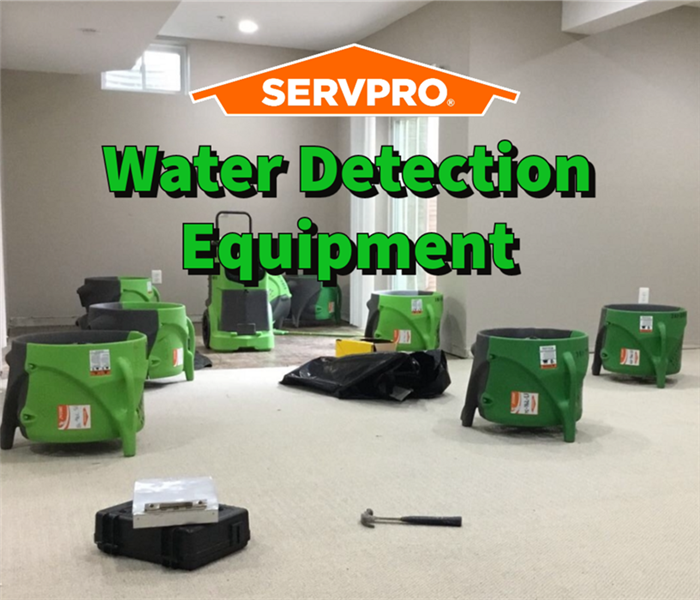 SERVPRO helps by utilizing their quality water detection equipment!
SERVPRO helps by utilizing their quality water detection equipment!
Water detection equipment is the saving grace for hidden water damage.
In the face of water damage, time is of the essence. Water can seep into the nooks and crannies of your property, causing hidden damage and potentially leading to more severe issues like mold growth and structural weaknesses.
That's why it's crucial to have a trusted expert on your side.
SERVPRO®, a leading name in damage restoration, utilizes state-of-the-art water detection equipment to accurately assess and address water damage, ensuring a thorough recovery process. In this detailed exploration, we'll delve into the various types of water detection tools used by SERVPRO professionals and how these technologies safeguard your property.
What is water detection equipment?
Water detection equipment encompasses a range of tools and devices designed to identify the presence and extent of water in a property. These advanced instruments are integral in the water damage restoration process, enabling water restoration professionals to quickly locate moisture often hidden within walls, floors, and ceilings. The science and technology behind these tools are fascinating and essential in ensuring effective restoration.
At the core of water detection technology lies the principle of electrical conductivity and thermal imaging. Many water detectors use sensors to measure the electrical conductivity of a material, which increases in the presence of moisture because water conducts electricity more efficiently than dry materials. By assessing variations in conductivity, these tools can pinpoint areas with abnormal moisture levels.
Infrared cameras, another critical component of water detection, work on the principle of thermal imaging. They detect temperature differences in various surfaces of a building. Wet areas typically have a different temperature than dry areas due to the evaporation of water, which cools surfaces. These cameras capture this temperature variance, visually representing it in a thermal image. This technology allows SERVPRO technicians to identify water presence even in areas that are not visible or accessible.
Other sophisticated devices, like hygrometers, measure the relative humidity and temperature in the air, providing insights into moisture levels and potential condensation issues. Advanced moisture meters can determine the exact moisture content in various materials, allowing for precise assessments that guide the drying process.
What are the types of water detection equipment SERVPRO deploys?
SERVPRO's arsenal of water detection tools includes:
- Moisture detectors and hygrometers: These devices measure the level of moisture in various materials and the air, helping technicians map the moisture landscape of a property.
- Infrared cameras: By capturing thermal images, infrared cameras can detect cooler areas where water may be present, often hidden from the naked eye.
- Water claws and extractors: These tools are essential in preventing secondary water damage when extracting water from carpets and padding.
- Dehumidifiers and air movers: Once the water is removed, these tools help dry out the area, ensuring no lingering moisture that could cause mold growth or structural damage.
By utilizing these technologies, SERVPRO technicians can formulate a targeted strategy to mitigate water damage effectively. They not only locate the source of the problem but also monitor the drying process to ensure the property is returned to a safe and dry state. This approach minimizes the risk of mold growth and structural damage, preserving the integrity and safety of the property.
Real-life scenario: recovering a Jackson County property from water damage
In a recent incident in Jackson County, Georgia, a homeowner faced significant water damage due to a burst pipe. Within hours of the call, our SERVPRO team arrived, equipped with the latest water detection tools. Moisture detectors pinpointed the water's reach, while infrared cameras revealed hidden moisture behind walls. Water claws swiftly extracted water from carpets, and dehumidifiers and air movers were deployed to dry the premises thoroughly. This prompt and precise response prevented further damage and costly repairs, showcasing SERVPRO's commitment to rapid and effective water damage restoration.
Why choose SERVPRO for water damage?
When facing water damage, choosing SERVPRO means opting for speed, efficiency, and thoroughness. Our professionals are trained to handle water damage of all scopes and complexities. Our advanced equipment and proven techniques ensure your property is restored to its preloss condition, mitigating risks like mold growth and structural issues. By choosing SERVPRO, you're repairing damage and safeguarding your property's future.
Conclusion
Navigating the aftermath of water damage requires expertise and precision. SERVPRO stands out as a leader in damage restoration, backed by an array of advanced water detection equipment and a team of seasoned professionals. From the initial assessment to the final touches of restoration, SERVPRO ensures a comprehensive recovery process, giving property owners peace of mind and a swift return to normalcy. SERVPRO is your trusted ally in restoring and protecting your property when water damage strikes.
7 Practical Tips for Preventing Crawlspace Water Damage
6/26/2023 (Permalink)
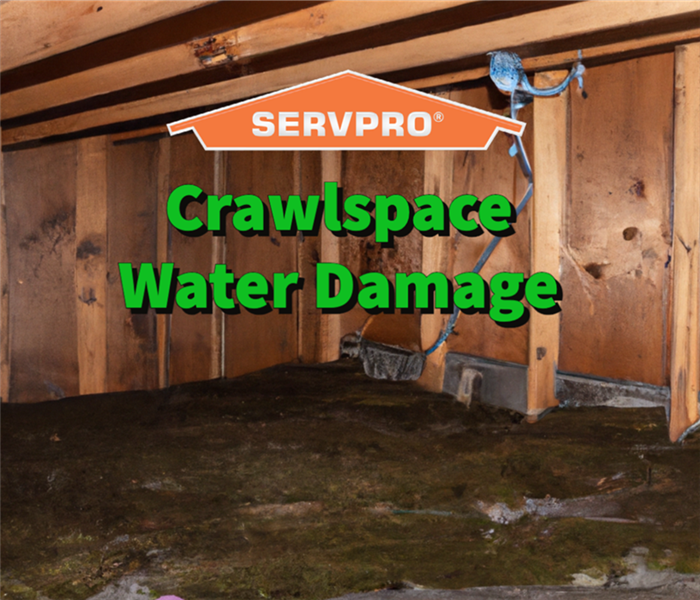 Let the professionals at SERVPRO help diagnose and restore your crawlspace water damage issue.
Let the professionals at SERVPRO help diagnose and restore your crawlspace water damage issue.
Protect your property from crawlspace water damage with SERVPRO.
Water damage is a severe issue that can wreak havoc on your property, leading to costly repairs and potential health hazards. While water damage can occur in various areas of your home, crawlspace water damage is a prevalent and often overlooked problem because of its low usage rate.
In this comprehensive guide, we will explore the world of crawlspace water damage, its causes, prevention tips, and why SERVPRO of Jackson and Madison Counties should be your top choice for water restoration services. Discover how to safeguard your property from the perils of crawlspace water damage and ensure a safe and dry environment for your home!
What is crawlspace water damage?
Crawlspace water damage refers to water infiltration into the area beneath your home, typically characterized by a shallow, accessible space used to accommodate plumbing, electrical, and HVAC systems. A crawlspace area is vulnerable to water damage due to its proximity to the ground, making it susceptible to flooding, moisture buildup, and mold growth. If left unaddressed, crawlspace water damage can lead to structural problems, compromised air quality, and other potential hazards.
What causes crawlspace water damage?
Understanding the causes of crawlspace water damage is essential for effective prevention. Here are some common culprits behind this type of water damage:
- Poor drainage: improperly designed or clogged gutters and downspouts can lead to water pooling around your home's foundation, seeping into the crawlspace.
- Plumbing leaks: faulty or damaged plumbing pipes can result in water leakage within the crawlspace. Over time, these leaks can lead to significant water damage and mold growth.
- Flooding: natural disasters or heavy rainfall can cause water to infiltrate the crawlspace, leading to immediate and severe damage if not addressed promptly.
- Condensation: inadequate ventilation in the crawlspace can result in excess moisture accumulation, leading to condensation and subsequent water damage.
Practical prevention tips for crawlspace water damage
Preventing crawlspace water damage is crucial for maintaining the integrity of your property. Implement the following tips to safeguard your crawlspace from water-related issues:
- Regular inspections: conduct routine checks of your crawlspace to identify any signs of water damage, including standing water, dampness, or musty odors. Early detection can prevent further damage.
- Proper drainage systems: ensure that your property has a well-maintained gutter and downspout system, directing water away from the foundation. Consider installing extensions to redirect water further from home.
- Foundation sealing: seal any cracks or gaps in your home's foundation to prevent water infiltration into the crawlspace. Consult a professional if you require assistance with this task.
- Adequate ventilation: ensure proper ventilation in the crawlspace to prevent moisture buildup. Install vents or use fans to promote air circulation and reduce condensation.
- Sump pump installation: a sump pump in the crawlspace can help mitigate flooding by efficiently removing excess water.
- Insulation and vapor barriers: insulate your crawlspace walls and add vapor barriers to prevent moisture from entering. Vapor barriers also help maintain a dry and stable environment.
- Regular plumbing maintenance: schedule regular inspections and maintenance for your plumbing system to detect and fix leaks promptly, reducing the risk of water damage.
Why choose SERVPRO for water restoration services?
SERVPRO stands out as a trusted and reliable choice regarding water restoration services. Here are the reasons why you should consider SERVPRO for all your water damage restoration needs:
- Expertise and experience: with decades of experience in the industry, SERVPRO professionals are highly trained and equipped to handle any water damage restoration project, including crawlspace water damage.
- Advanced equipment: SERVPRO utilizes state-of-the-art equipment and technology to efficiently extract water, dry affected areas, and restore your property to its pre-damage condition.
- Prompt response: SERVPRO understands the urgency of water damage situations and offers a 24/7 emergency response. Our swift action minimizes further damage and reduces the restoration timeline.
- Comprehensive services: from initial assessment to water extraction, drying, sanitization, and restoration, SERVPRO provides a complete range of services tailored to your needs.
- Industry Connections: SERVPRO has extensive connections within the industry, allowing us to collaborate with insurance companies and streamline the claims process, reducing stress for homeowners.
- Mold remediation expertise: If your crawlspace has experienced water damage, the risk of mold growth increases. SERVPRO has expertise in mold remediation, ensuring a thorough and safe restoration process.
Wrapping up
Crawlspace water damage can have severe consequences for your property. By implementing the preventive measures outlined in this guide, you can protect your home and mitigate the risks of crawlspace water damage.
SERVPRO is your reliable partner in any water-related emergencies, offering expert restoration services with a prompt and professional approach. Choose SERVPRO of Jackson and Madison Counties and experience peace of mind, knowing your property is in capable hands!
Hardwood Floor Water Damage: The Top 5 Warning Signs
1/30/2023 (Permalink)
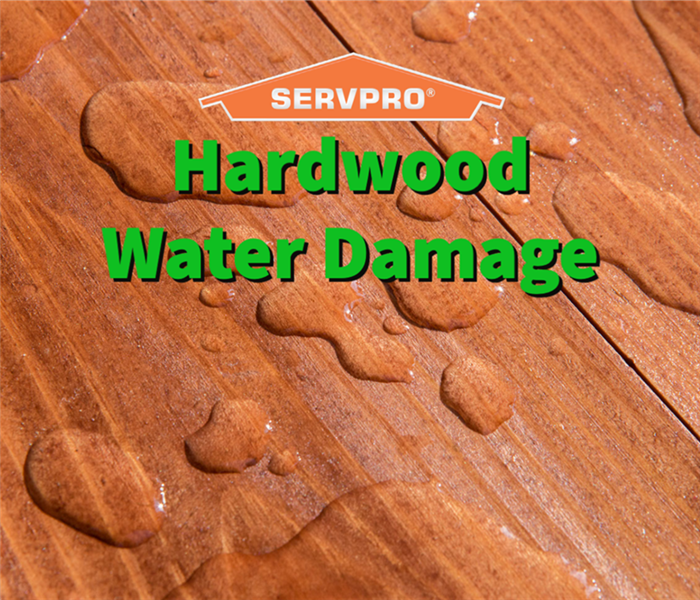 SERVPRO professionals will do everything they can to save your hardwood floors after water damage!
SERVPRO professionals will do everything they can to save your hardwood floors after water damage!
Hardwood floor water damage can be hard to detect and can cause extensive damage if left untreated.
Water damage can wreak havoc on hardwood floors, leading to costly repairs and even complete replacement. Therefore, it's essential to be aware of the warning signs indicating that a hardwood floor has been damaged by water or moisture.
The professionals at SERVPRO of Jackson and Madison Counties are your go-to resource for hardwood floor repair if water damage occurs. We have put together the following blog post to educate you and describe the five telltale warning signs to look out for when it comes to hardwood floor water damage.
What is hardwood floor water damage?
Hardwood floor water damage occurs when water or moisture seeps into hardwood floors and affects the integrity of your floor. The wood can warp and swell when hardwood floors are exposed to excessive moisture for an extended period.
Various sources, such as floods, heavy rainstorms, high humidity levels, plumbing leaks, and overwatered plants, can cause water damage. Looking for any signs of hardwood floor water damage is a good way of determining whether or not you have a more significant water damage problem on your property.
Five indications of hardwood floor water damage
Now that you know a bit more about hardwood floor water damage, let's take a look at the five warning signs that indicate your hardwood floor requires repairs:
- Discoloration or staining on the wood: Hardwood floors coming into contact with excessive moisture can cause discoloration or staining. Discoloration can range from dark spots to even a complete change in the original color of the hardwood.
- Warping, cupping, or buckling: These are some of the more obvious signs that hardwood floor water damage has occurred. Water damage can cause hardwood floors to warp, cup, or buckle due to moisture swelling and expanding the wood.
- Softening of the hardwood: Another sign of hardwood floor water damage is that the hardwood can become soft when touched. Softening of the hardwood is due to the moisture causing the wood to swell and become weaker than it should be.
- Swelling or separation between boards: Excessive moisture can also cause hardwood floors to swell and lead to separation between boards. Swelling or separation is another sign that hardwood floor water damage has taken place.
- Musty odors: Finally, hardwood floors with water damage can emit a musty smell that indicates the presence of moisture or mold growth in the cracks or beneath the hardwood floor.
These are the top five warning signs to watch out for when it comes to hardwood floor water damage. If you notice any of these signs, you must call a water restoration company to get the hardwood floor repaired or replaced as soon as possible to prevent further damage. They can also determine if your property is at risk from further water intrusion.
Tips for preventing future hardwood floor water damage
Before hardwood floor water damage has the chance to occur, there are a few things you can do to make sure your hardwood floors stay in good shape:
- Make sure to keep hardwood floors clean and dry at all times. Vacuum regularly, mop up spills as soon as they happen, use a dehumidifier if necessary, and clean hardwood floors with the appropriate hardwood floor cleaner.
- Check hardwood floors regularly for signs of water damage, such as discoloration or staining on the wood, warping, cupping, or buckling, softening of the wood, swelling or separation between boards, and musty odors.
- When you notice hardwood floor water damage, contact a professional water restoration company to help you with the repairs and get your hardwood floors back in good condition.
Following these tips can help prevent hardwood floor water damage from occurring in the first place. Still, if hardwood floor water damage has already happened, the professionals at SERVPRO of Jackson and Madison Counties are here to help. We specialize in hardwood floor water damage repair and replacement, so don't hesitate to reach out if you require hardwood floor water damage services.
Wrapping up
Today we discussed hardwood floor water damage, the warning signs to look out for, and how to prevent hardwood floor water damage in the future. If hardwood floor water damage has already occurred to your property, don't hesitate to contact SERVPRO of Jackson and Madison Counties for help.
SERVPRO of Jackson and Madison Counties is a professional water damage repair company that can help you get your hardwood floors back in good condition. When you contact us for water restoration repairs, we will:
- Inspect the hardwood floors and assess the damage
- Apply specialized hardwood floor drying solutions
- Repair or replace hardwood floors as needed
- Sanitize hardwood floors to prevent mold growth
With our help, you can trust that we will restore your hardwood floors to their original condition. Don't hesitate to get in touch with us today for more information and help with hardwood floor water damage.
4 Ways Kitchen Water Damage Can Cause Ruin In Your Home
9/22/2022 (Permalink)
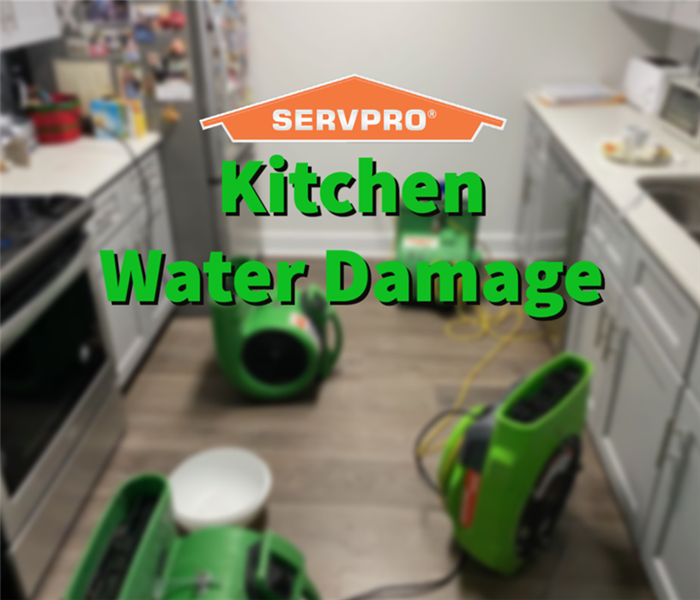 The professionals at SERVPRO are available 24/7 to combat water damage!
The professionals at SERVPRO are available 24/7 to combat water damage!
Call SERVPRO of Jackson and Madison Counties as soon as you discover kitchen water damage.
Water damage can occur in any room of your home, but kitchen water damage is one of the most common because the kitchen is a high-traffic area where accidents are bound to happen.
Water damage in the kitchen can be a huge hassle. Not only is it unsightly, but it can also lead to further damage if not dealt with properly. Therefore, if kitchen water damage occurs in your home, it is crucial to take action immediately to minimize the damage.
If you have experienced kitchen water damage, don't worry—we are here to help. In this blog post, we will discuss how experts restore your kitchen to its original condition and provide information on choosing a restoration company that will help you get the job done quickly and efficiently!
What is water damage?
Water can damage your home in several ways, including:
- Ruining furniture, floors, and other possessions
- Causing mold and mildew to grow
- Damaging electrical wiring
- Creating a dangerous environment due to bacteria growth
The three categories of water damage are determined by the potential for bacteria in the floodwater.
- Category 1 water damage is the cleanest. A broken pipe or leaking appliance often causes this type of water damage.
- Category 2 water damage—called "gray water" because it may contain bacteria—can come from a toilet or dishwasher.
- Category 3 water damage is the most contaminated, often caused by sewage backup or floodwater.
What can cause kitchen water damage?
Many things can cause kitchen water damage, including:
- A leaking dishwasher
- A leaking sink
- A clogged kitchen drain
- A broken pipe in the kitchen
Recently, we encountered kitchen water damage because the water line to a refrigerator ruptured. The event damaged the hardwood floors in the kitchen and leaked into the basement, requiring extensive drywall replacement. Luckily, the property owners contacted us within hours, limiting their risk for mold growth.
While the above example did take time to fix, the entire situation could have been made worse if they weren't at home to catch the leak (for example, if they were on vacation). Of course, we'd have to include our mold specialists in the restoration.
How do experts restore a kitchen to its original condition after water damage?
The first step in the water damage restoration process is to assess the damage and determine the best course of action. A professional restoration company like SERVPRO of Jackson and Madison Counties always starts with an estimate.
Next, we must remove the water from the kitchen with a pump or a wet/dry vacuum. The furniture and appliances in the kitchen must also be removed and dried, along with the walls and floor. Typically, this drying is done with a dehumidifier. Once the kitchen is dry, it is ready for repair back to its original condition.
How can you choose the right restoration company for your kitchen water damage needs?
When water damage occurs in your kitchen, it is important to choose a restoration company that will help you get the job done quickly and efficiently.
When choosing a water damage restoration company, ensure they have experience and expertise in kitchen water damage restoration. The company should also have a quick response time, beginning the restoration process as soon as possible. Also, check that the company is licensed and has insurance. Finally, the company should have excellent customer service so you can be assured of quality service.
SERVPRO of Jackson and Madison Counties is here for the residents of Georgia who experience water damage or any other property disasters. We have technicians available 24/7 and can be on your property within hours. So give us a call, and we'll be there to help you out, making it "Like it never even happened."
Water Heater Burst? 5 Simple Steps for Effective Recovery
8/18/2022 (Permalink)
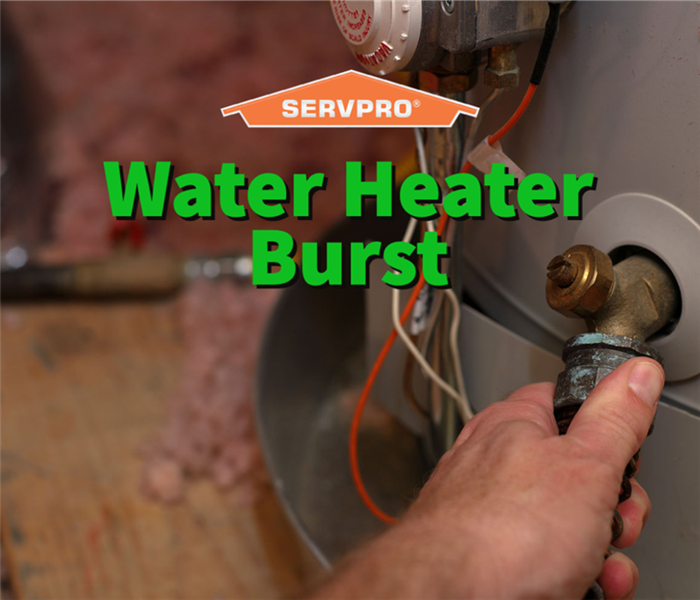 The professionals at SERVPRO are ready to help you combat water damage!
The professionals at SERVPRO are ready to help you combat water damage!
Has a water heater burst flooded your basement?
If you've ever had a water heater burst, you know that it can cause massive water damage and leave your basement in shambles. A burst water heater can dump gallons of water into your home in minutes, and the resulting mess can be overwhelming.
If this happens to you, there are some steps you can take to minimize the damage and get your life back to normal as soon as possible. The most important? Working with a water damage restoration professional like SERVPRO of Jackson and Madison Counties who has experience helping property owners recover from disaster.
This article will outline what to do if your water heater bursts and water damage restoration is necessary.
What to do if your water heater bursts
If you experience a water heater burst, take the following steps to mitigate the damage:
- Shut off the water supply to the water heater. You can usually do this at the valve near the water heater.
- Turn off the power to the water heater. This can usually be done at the breaker box.
- Call a water damage restoration professional like SERVPRO of Jackson and Madison Counties. We have experience helping homeowners recover from this type of disaster and can help you get your life back to normal as quickly as possible.
- Call your insurance company. Be sure to document the damage with photos and video before you begin the cleanup process. Your insurance company will likely cover the cost of the water damage restoration.
- Schedule a repair or replacement. Once the water damage has been mitigated, you'll need to schedule a repair or replacement for your water heater.
What type of water damage does a burst water heater cause?
A water heater burst can cause extensive basement water damage. The water can seep into the walls and floor and can cause mold growth and other structural damage.
Wall water damage:
If the water heater is located in the basement, there is a good chance that the water will seep into the walls and cause damage. If this happens, you'll need to have the walls dried out and repaired by a professional.
Floor water damage:
The water can also seep into the floor, causing damage to the flooring material and potentially causing mold growth. If this happens, you'll need to have the flooring replaced or repaired.
Mold growth:
If the water is not dried out quickly enough, mold can start to grow. Mold creates a more complicated situation and must be removed by a professional.
Structural damage:
The water from a burst water heater can cause severe structural damage to your home. If the damage is severe, you may need to have the affected area rebuilt by a professional.
The water damage restoration process
A water damage restoration professional will first assess the damage and determine the best course of action. Often, they will begin by drying out the area and removing any water or moisture. They may also use special equipment to detect any hidden moisture that could lead to mold growth.
Next, they will begin the cleanup process. This can involve removing furniture and other belongings from the area, cleaning up any water or mud, and disinfecting the area.
Finally, they will work with you to schedule a repair or replacement for your water heater. Then, with the help of a professional, you can get back to normal as quickly as possible.
Trust SERVPRO of Jackson and Madison Counties when you have a water heater burst!
Whenever an unexpected water emergency arises on your property, it is crucial to get in touch with a water damage restoration expert who can minimize your risk for mold growth. Then, take pictures of the situation—this evidence is helpful for insurance claims.
While a water heater burst can cause a lot of damage, it doesn't have to ruin your life. With the help of a water damage restoration professional like SERVPRO of Jackson and Madison Counties, you can get your life back to normal quickly and without any hassle. We have experience helping homeowners recover from this type of disaster, and we're here to help you too! So give us a call today!
The Top 4 Causes of Basement Water Damage
7/7/2022 (Permalink)
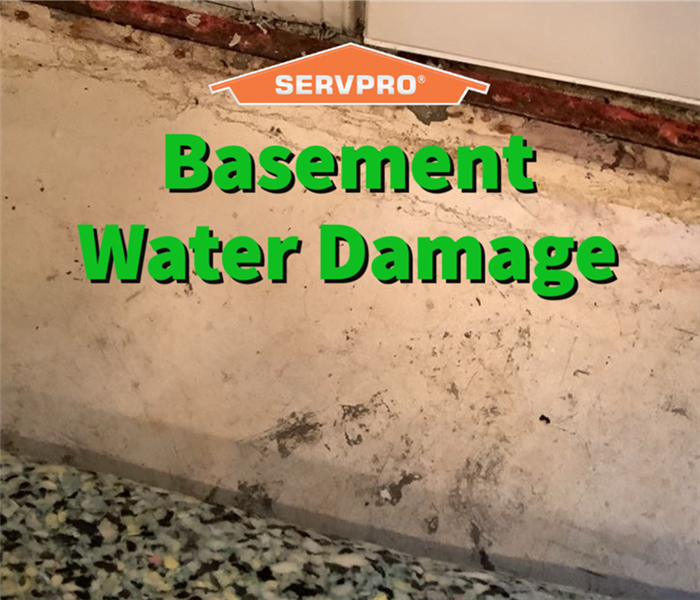 The professionals at SERVPRO are available 24/7 for emergency water damage services!
The professionals at SERVPRO are available 24/7 for emergency water damage services!
Basement water damage can strike any home at any time, without warning.
Your home is probably your most significant investment. So when water damage strikes, it can be a substantial financial blow. Basement water damage is one of the most common and costly types of water damage, and there are several potential causes.
The biggest issue with basement water damage is that it often goes unnoticed for so long that the damage is often severe when a property owner realizes there's a problem.
The professionals at SERVPRO of Jackson and Madison Counties have put together this blog post to discuss four of the most common causes of basement water damage so that you can prepare before it happens.
What is basement water damage?
Basement water damage is a severe issue that can cause a lot of damage to your home. The most common causes of basement water damage are:
- Rainwater infiltration
- Groundwater intrusion
- Plumbing failures
- Sewer backups
Rainwater infiltration
One of the most common causes of basement water damage is rainwater infiltration. If your basement is not properly waterproofed, water can seep through the walls and floors and cause extensive damage. You can do several things to help prevent this, such as installing proper gutters and downspouts to divert rainwater away from your home, as well as making sure your basement is properly sealed and waterproofed.
Groundwater intrusion
Another common cause of basement water damage is groundwater intrusion. Groundwater intrusion happens when water from the ground seeps into your basement through cracks in the foundation or walls. You can do several things to help prevent this, such as making sure your basement is properly sealed and waterproofed and installing a sump pump to remove any water that does seep in.
Plumbing failures
Another common cause of basement water damage is plumbing failures. Plumbing failures can happen when pipes leak or burst or appliances like washing machines or water heaters leak. If you have any plumbing in your basement, it's essential to ensure it is in good working order and that there are no leaks.
Sewer backups
The final common cause of basement water damage is sewer backups. Sewer backups can happen when the city sewers overflow or your home's sewer line becomes blocked. A blocked sewer line can cause raw sewage to back up into your basement, categorized as category three water damage to restoration professionals. However, there are several things you can do to help prevent this, such as having your sewer line cleaned regularly and installing a backwater valve.
Preventing basement water damage
Now that you are familiar with the four most common causes of basement water damage, you can take steps to prevent it. Some things you can do to prevent basement water damage are:
- Make sure your basement is properly sealed and waterproofed.
- Ensure gutters and downspouts divert rainwater away from your home.
- Install a sump pump to remove any water that does seep in.
- Clean the sewer line regularly.
- Install a backwater valve.
How SERVPRO of Jackson and Madison Counties help you restore your basement water damage
If you are dealing with basement water damage, the professionals at SERVPRO of Jackson and Madison Counties are here to help. We have the experience and training to quickly and effectively restore your basement to its pre-damaged state. When you choose to contact our team of water restorers, you will receive:
- An assessment and plan to restore the basement water damage
- 24/7 emergency services
- A team of experienced and IICRC-certified technicians
- The use of commercial-grade equipment and techniques
There is no need to combat water damage alone. Instead, contact SERVPRO of Jackson and Madison Counties to work with you every step to make the process as smooth and seamless as possible.
The 5 Most Common Causes of a Skylight Leak
5/26/2022 (Permalink)
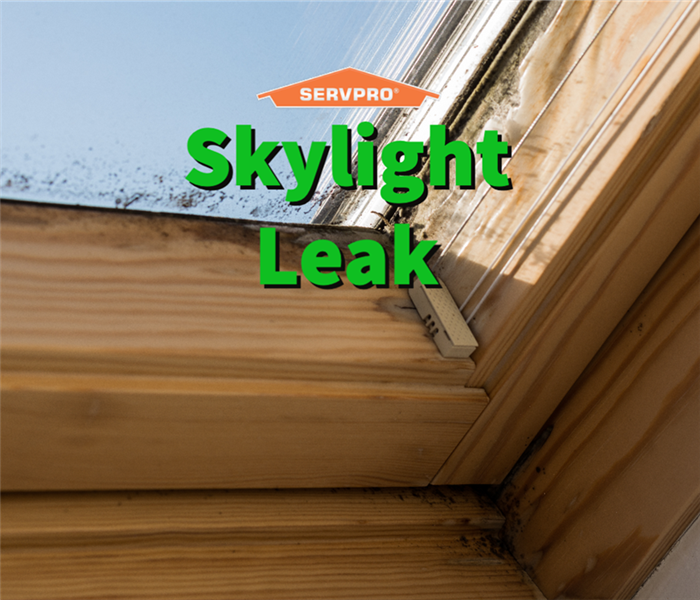 Contact the professionals at SERVPRO for emergency skylight leak repairs!
Contact the professionals at SERVPRO for emergency skylight leak repairs!
Skylight leaks can cause water damage to your roof and interior walls.
Skylights are a beautiful addition to any home. They provide natural light and can help reduce energy costs. However, the SERVPRO of Jackson and Madison Counties professionals relieve multiple water damage calls caused by skylights a year because they are one of the most common home leak sources.
A skylight leak can cause a lot of damage to your home, so it's essential to address the issue as soon as possible. In this blog post, we will discuss the five most common causes of a skylight leak:
- Poor flashing installation
- Improper roof ventilation
- Ice dams
- Damaged or missing shingles
- Debris on the roof
Be sure to read to the end to find tips on preventing a skylight leak in your home!
What is a skylight leak
A skylight leak is a water leak that occurs around or in a skylight. Skylights are a common source of water leaks, as they can be susceptible to wind and rain damage. Skylight leaks can cause extensive water damage to your home, so it is essential to identify and fix the issue as soon as possible. In some cases, a professional can fix the skylight leak with a simple repair, but the skylight may need replacing in other cases.
The five most common causes of skylight leaks
Now that you know what a skylight leak is, let's discuss the five most common causes of skylight leaks:
1) Poor flashing installation
One of the most common causes of skylight leaks is poor flashing installation. Flashing is a material used to seal the area around the skylight to prevent water leaks. Skylights are usually installed with a metal flashing, but the flashing can become loose or damaged over time. If the flashing around your skylight is incorrectly installed or poorly maintained, it can allow water to leak through and cause damage to your home.
2) Improper roof ventilation
Another common cause of skylight leaks is improper roof ventilation. Ventilation is essential for all types of roofs, but it is significant for homes with skylights. Skylights can trap heat and moisture in your home, leading to condensation and leaks. If your home does not have proper ventilation, it can cause the area around your skylight to become moist and damaged.
3) Ice dams
Ice dams are another common cause of skylight leaks. Ice dams form when snow and ice melt on your roof and refreeze. As the ice dam grows, it can block the drainage around your skylight, causing water to back up and leak into your home.
4) Damaged or missing shingles
Damaged or missing shingles are another common cause of skylight leaks. Shingles protect your roof from the elements, but they can become damaged or loosen and fall off over time. If the shingles around your skylight are damaged or missing, it can allow water to leak through and cause damage to your home.
5) Debris on the roof
Debris on your roof, such as leaves and branches, can also cause skylight leaks. When debris accumulates on your roof, it can block the drainage around your skylight and cause water to back up and leak into your home.
How to prevent skylight leaks
Now that you know the five most common causes of skylight leaks, let's discuss how to prevent them:
- Inspect and repair the flashing around your skylight regularly.
- Make sure your home has proper ventilation, especially in the area around your skylight.
- During the winter months, regularly remove snow and ice from your roof to prevent ice dams from forming.
- Inspect and repair any damaged or missing shingles around your skylight.
- Keep your roof clear of debris, such as leaves and branches.
SERVPRO of Jackson and Madison Counties- your local experts for skylight leak repair
If you think you may have a skylight leak, be sure to contact a professional water damage restoration company like SERVPRO of Jackson and Madison Counties. Our team of IICRC-certified water damage restoration technicians has the experience and training to quickly and efficiently repair your skylight leak, minimize the damage to your home, and get your life back to normal.
Skylight leaks can cause extensive damage to your home, so don't wait to contact us. We are available 24 hours a day, seven days a week, and we will respond immediately to your call.

 24/7 Emergency Service
24/7 Emergency Service









